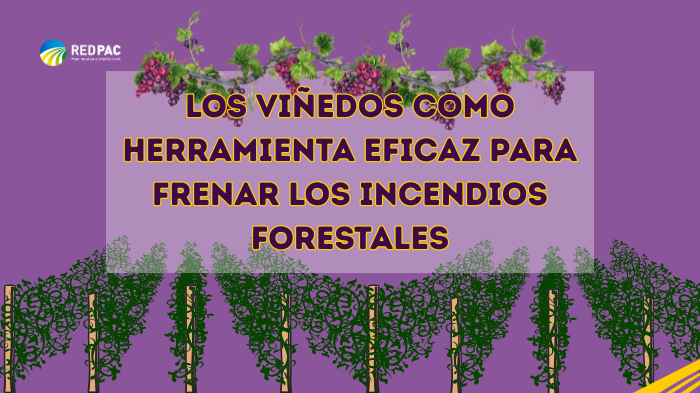
18 de July de 2025
Cambio climático y gestión de recursos naturales
Resiliencia y competitividad
Biodiversidad y paisaje
The wine sector is strengthening its role in protecting rural areas in the face of climate change.
- The wine sector is strengthening its role in protecting rural areas in the face of climate change.
- Well-managed vineyards act as natural firebreaks, slowing the spread of fire and strengthening the resilience of rural areas.
- Projects such as “Vins de Foc” and “Mas Marès” demonstrate how to unite wine production, sustainability, and civil protection.
Every summer, forest fires ravage thousands of hectares in Europe, exacerbated by rural exodus, heat waves, and urban sprawl. In this context, an unexpected player is emerging as a key ally in prevention: vineyards .
Beyond its economic, cultural, and gastronomic value, well-managed winemaking is proving to be an effective tool for halting the spread of fires and protecting both the natural environment and the safety of rural communities. The European Commission (EC) and various Member States are promoting initiatives that integrate this strategic function into their agricultural, environmental, and civil protection policies, in line with the recent reform of the wine sector .
Benefits of vineyards
Climate change has multiplied the risk of forest fires across much of the continent. The abandonment of agricultural land has reduced the crop zones that once acted as natural barriers. In this context, vineyards offer a practical response.
Studies agree that when vineyards are properly maintained, they can slow or stop fires in several ways:
Creating interruptions in the combustible material that feeds the flames.
Facilitating access to emergency equipment.
Reducing fire intensity in interface zones between urban and natural areas.
Contributing to a mosaic landscape , more resistant to large fires.
It should be noted that effectiveness depends on proper management, as uncontrolled ground cover can be counterproductive and encourage the spread of flames.
European projects with vineyards
In Catalonia, initiatives have emerged that integrate viticulture into fire prevention strategies, combining agricultural innovation and land protection. Among the most notable examples:
“Vins de Foc” (“Fire Wine”): promoted by the Center for Forest Science and Technology of Catalonia (CTFC) promotes vineyards as fire-resistant landscapes. Participating wineries receive an environmental and social recognition label. This project is part of the European Horizon 2020 program , which has created a network of winegrowers in Spain, France, Portugal, and Italy who apply sustainable techniques and collaborate with forestry services.
“Vi Fumat” (Empordà): This initiative involves producing a distinctive wine made from grapes exposed to forest fire smoke. Taking advantage of the adverse conditions experienced by the crops, they highlight how restorative agricultural practices can contribute to fire prevention while also generating economic and cultural value.
“Mas Marès” (Alt Empordà): This estate has been combining vineyards, pastures, and seaside clearing for over 20 years. In 2022, a fire was contained within its perimeter thanks to this patchwork approach.
The Catalan Pyrenees also host specific interventions such as planting vineyards on steep slopes, with a two-pronged approach: restoring unused land and establishing natural fire barriers.
The key to all these models is that in addition to reducing the risk of fires, they also:
They improve the environmental value of the landscape.
They open up new market and promotional opportunities for wine.
They strengthen the rural fabric in the face of depopulation.
Challenges and recommended actions
The European wine sector is currently facing several challenges, such as declining consumption, competition from other beverages, climate variability, and increased exposure to natural hazards. In this context, strengthening its role as a defender of the region can also be an opportunity.
The recommendations of the High Level Group on Wine Policy point in this direction, defining the following priorities:
Promote multifunctional and sustainable land uses .
Support producers with incentives to locate vineyards in strategic areas .
Introduce more effective risk management tools .
Promote wine tourism and the marketing of wines with added environmental value.
In addition, the Common Agricultural Policy (CAP) , through the CAPEP , offers key instruments such as eco-regimes for woody crops, sectoral intervention in wine and rural development interventions , which allow the financing of fire prevention measures linked to agriculture.
The future of rural Europe
Vineyards are not just plots of land; they are part of the landscape, history, and rural soul of Europe. With proper management and institutional support, they can be transformed into a strategic network of living firebreaks , capable of protecting both biodiversity and human communities.
Initiatives like those mentioned above demonstrate that it is possible to combine production, sustainability, and security. A glass of wine, in this new approach, can also be a toast to a safer, more resilient, and vibrant landscape.









